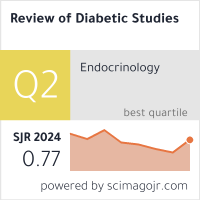“Effectiveness of Training and Awareness Programs in Reducing Needlestick and Infection Risks among EMS, Obstetrics & Gynecology Doctors, Midwives, Nurses, Anesthesia Technicians, and Laboratory Technicians: A Systematic Review”
DOI:
https://doi.org/10.1900/revk9w41Keywords:
Needlestick injuries; Sharps safety; Infection prevention; Training programs; Awareness programs; Multidisciplinary healthcare; Emergency Medical Services; Obstetrics and Gynecology; Midwives; Nurses; Anesthesia technicians; Laboratory technicians.Abstract
Background: Needlestick and sharps injuries (NSIs) remain a major occupational hazard for healthcare professionals, leading to exposure to bloodborne pathogens such as HBV, HCV, and HIV. Although training and awareness programs have been widely promoted, the effectiveness of these interventions across multidisciplinary healthcare teams has not been comprehensively reviewed.
Objective: This systematic review evaluates the effectiveness of training and awareness programs in reducing needlestick and infection risks among Emergency Medical Services (EMS) providers, obstetrics and gynecology doctors, midwives, nurses, anesthesia technicians, and laboratory technicians.
Methods: Following PRISMA 2020 guidelines, a comprehensive search of PubMed, Embase, CINAHL, Scopus, and Web of Science was conducted for studies published between 2000 and 2024. Eligible studies included randomized controlled trials, quasi-experimental, observational, and systematic reviews evaluating training or awareness interventions targeting NSI prevention. Data extraction and quality appraisal were conducted using Cochrane RoB 2.0, JBI tools, and AMSTAR-2 as appropriate.
Results: A total of 80 studies were included. Training interventions consistently reduced NSI incidence across disciplines. Nurses showed reductions of up to 30–40% following structured safety education, while midwives and obstetrics staff benefited from annual infection prevention training and double-gloving protocols. EMS providers achieved a 40% reduction in exposures following simulation-based training, while laboratory technicians demonstrated improved compliance with biosafety protocols. Evidence for anesthesia technicians, though limited, showed positive outcomes with specialized workshops. Despite progress, underreporting and inconsistent implementation of training remain significant barriers.
Conclusion: Training and awareness programs are effective in reducing NSI and infection risks across diverse healthcare professions. A multidisciplinary, tailored, and policy-supported approach is essential to sustain long-term improvements. Integration of digital platforms and reporting systems may further enhance effectiveness.


